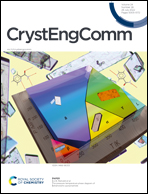PdAu-based nanotheranostic agent for photothermally initiated and oxygen-independent free radical generation†
Abstract
Due to the rapid proliferation of tumor cells leading to high oxygen consumption, solid tumors generally have the characteristics of hypoxia, which greatly limits the effect of photodynamic therapy sensitive to oxygen levels. Here, we report the construction of a photodynamic/photothermal synergistic theranostic agent, which mainly utilizes oxygen-independent free radicals generated from a thermally decomposable free radical initiator and in situ heating to kill cancer cells, overcoming the poor tumor therapeutic effect in a hypoxic environment. In this case, the 2,2′-azobis-[2-(2-imidazolin-2-yl)propane] dihydrochloride (AIPH) molecule, as a thermally decomposable free radical initiator, is loaded on polydopamine-coated PdAu alloy nanoparticles via π–π stacking (named as AIPH-PdAu@PDA). A self-assembly strategy was applied by using gadolinium-bovine serum albumin (Gd-BSA) complexes to encapsulate the AIPH-PdAu@PDA nanoparticles, resulting in the final magnetic resonance/computed tomography/photoacoustic triple-modal imaging guided and single laser (808 nm) activated photodynamic/photothermal therapy theranostic agent AIPH-PdAu@PDA@Gd-BSA, denoted as APPG. Systematic evaluations in vitro demonstrate that this interesting theranostic platform can rapidly generate high heat under irradiation from the 808 nm laser, thereby inducing the initiator AIPH molecule to produce oxygen-independent free radicals and displaying excellent triple-modal imaging performance. Therefore, the proposed triple-modal imaging-guided single laser activated synergistic therapy nanocomposite is a promising platform for imaging-guided cancer treatment.



 Please wait while we load your content...
Please wait while we load your content...